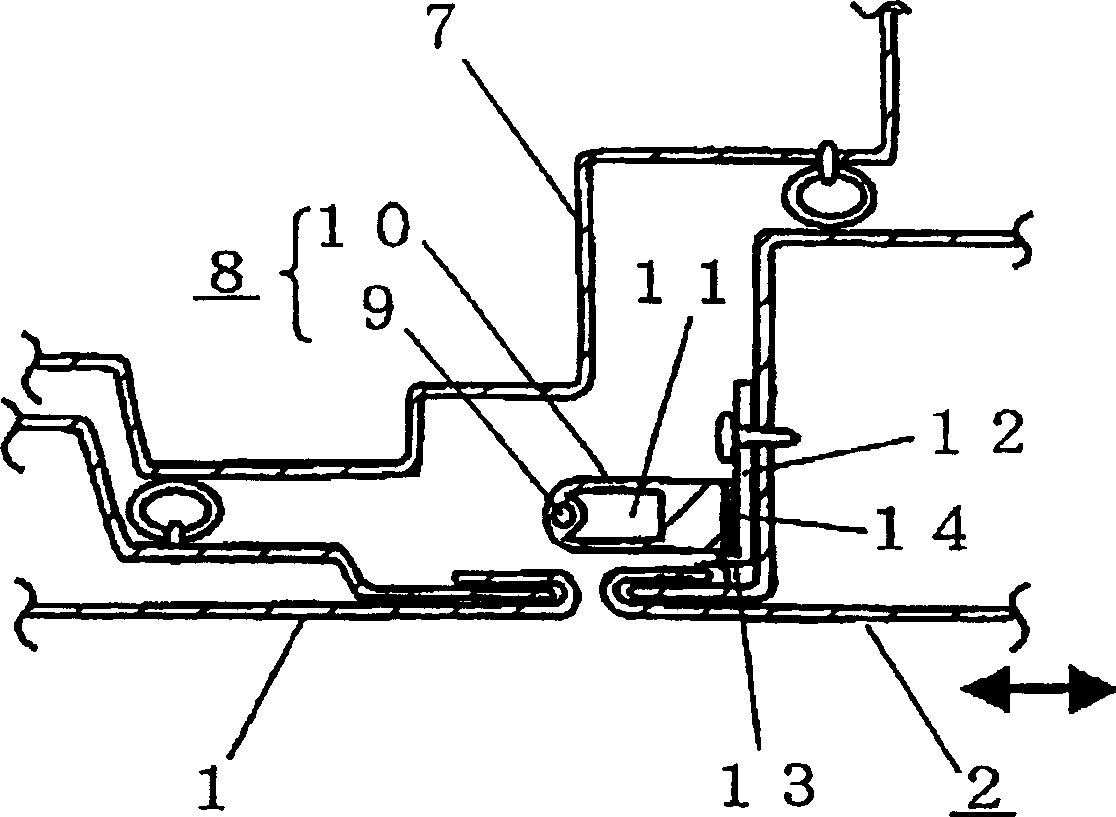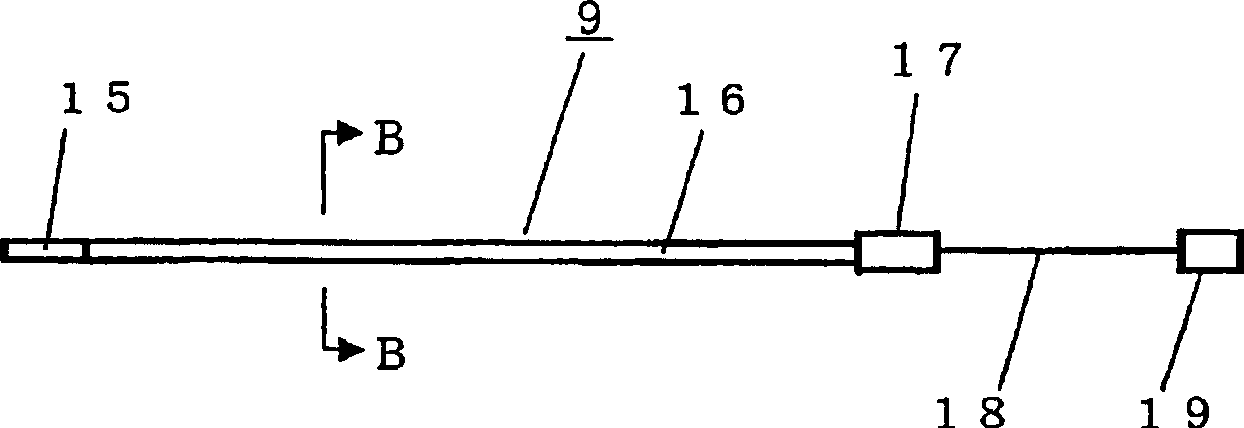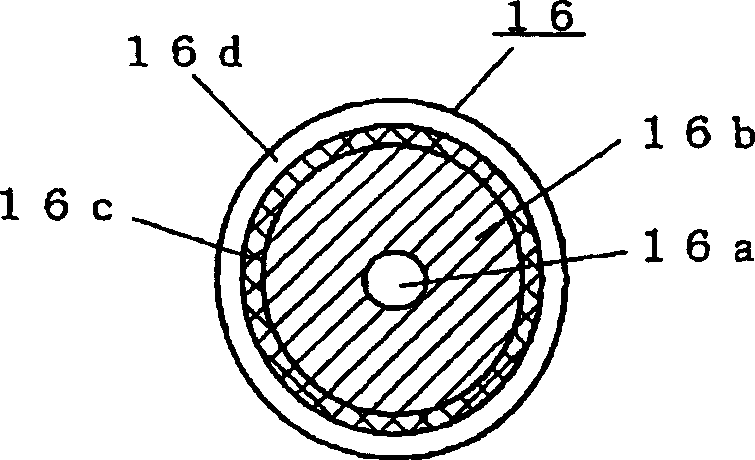Moving device and open/close control device for moving body
A mobile device and control device technology, applied in the measurement of the force of the piezoelectric device, door/window accessories, transportation and packaging, etc., can solve problems such as inability to handle, inability to suppress dark current, etc.
- Summary
- Abstract
- Description
- Claims
- Application Information
AI Technical Summary
Problems solved by technology
Method used
Image
Examples
Embodiment 1
[0059] The invention according to Embodiment 1 will be described by referring to FIGS. 1 to 5 and 7 . In Embodiment 1, the mobile device of the present invention will be applied to a sliding door of an automobile.
[0060] Fig. 1 is the mobile device of embodiment 1 corresponding to Figure 7 Sectional view at the position of the middle line A-A. FIG. 1 shows a state where a sliding door is completely closed, and the upper side of the drawing shows the interior of the vehicle, and the lower side thereof shows the exterior of the vehicle.
[0061] First, the structure of the mobile device of Embodiment 1 will be described as follows. In FIG. 1, reference numeral 1 denotes a main body part of a vehicle main body ( Figure 7 The rear part of the door on the side of the front passenger seat in ), 2 represents a sliding door as a mobile body. Reference numeral 7 denotes the main structure of the vehicle body, and 8 denotes a contact detection device having a piezoelectric sensor ...
Embodiment 2
[0092] refer to Figure 6 , the invention according to Embodiment 2 will be described. Figure 6 It is an external view showing the mobile device of the second embodiment. Embodiment 2 differs from Embodiment 1 in that the mobile body is a running vehicle 24 having a bumper 23 , and an object detection device 8 is provided in the bumper 23 .
[0093] With this configuration, when the object detection device 8 detects contact of an object or the object that has been in contact leaves, the operation of the operating vehicle 24 is stopped, or the operating direction of the operating vehicle 24 is reversed for a preset time. Furthermore, when contact of an object is detected before the operation vehicle 24 starts to operate, a configuration may be adopted in which operation of the operation vehicle 24 is continuously stopped until departure of the object is detected. According to this configuration, by detecting the contact or departure of an object from the bumper 23, the opera...
Embodiment 3
[0096] The invention according to Embodiment 3 will be described below. The difference between this embodiment and Embodiments 1 and 2 is that when the amplitude of the output signal output from the piezoelectric sensor 9 exceeds a preset range, the detection part 17 determines whether the contact or separation of the object has occurred. Specifically, in Figure 5 In the characteristic diagram of V in , when the absolute value of the amplitude of V0 to V exists, it is determined whether contact or separation of an object has occurred, and a signal Hi is output from the object detection device 8 as a determination output. A window comparator can be used as the actual circuit to perform the above process.
[0097] In case of contact or separation, the polarity of V with respect to V0 will change depending on the conditions in the bent state and the polarization direction of the piezoelectric sensor, the electrode configuration (which will form the reference voltage) and the pi...
PUM
| Property | Measurement | Unit |
|---|---|---|
| Diameter | aaaaa | aaaaa |
Abstract
Description
Claims
Application Information
 Login to View More
Login to View More - R&D
- Intellectual Property
- Life Sciences
- Materials
- Tech Scout
- Unparalleled Data Quality
- Higher Quality Content
- 60% Fewer Hallucinations
Browse by: Latest US Patents, China's latest patents, Technical Efficacy Thesaurus, Application Domain, Technology Topic, Popular Technical Reports.
© 2025 PatSnap. All rights reserved.Legal|Privacy policy|Modern Slavery Act Transparency Statement|Sitemap|About US| Contact US: help@patsnap.com



